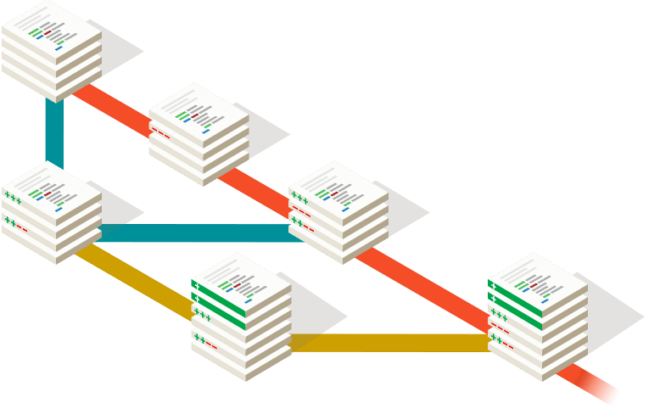Software Development Contract. What should you pay attention to
When a company needs a software that is not yet on the market, there are several solutions: 1) to select a product more or less suitable for its characteristics and “invest” in its development; 2) order the creation of a new software that will strictly meet the requirements of the business.

For example, the company decided to order the development of a new software. In order to prepare a contract for all parameters favorable to the organization, you need to know all the rules and the subtleties of its structure. In particular, these are:
1. The subject of this contract
This section should be formulated accurately, unambiguously and correctly reflect the subject of the contract. Here you can even prescribe how this software will be implemented. In fact, we are considering a contract between Customer and Contractor.
The Contractor, by request from the Customer, performs work in the field of IT and the Customer accepts to pay for the work performed by the Contractor according to the conditions provided in this Agreement.
2. Terms of Reference
Terms of Reference – it is a document, which contains customer requirements for the result of the services or work, in accordance with which the result should be accepted.
This document contains main purpose of the work, services, their characteristics, customer’s task, description of the primary data, goals and objectives, timing of the work/services, requirements for the work/services, their results, guarantees, description of the work/ services, reporting forms, substantiation of requirements for work/services, equivalent indicators, economic requirements, as well as special requirements.
In case of the absence of technical requirements, the result may not meet the expectations of the Customer, and it will be problematic to prove that the Contractor has not completed the work or performed it inappropriately. So in case of absence of documented detailed requirements for the result of the work, the Customer will be required to accept the work of the Contractor anyway.
For example,
To perform work under this Agreement, the Customer transfers to the Contractor Terms of Reference, which contains a list, volumes, terms and procedure for the performance of work. Work is performed by the Contractor exclusively in accordance with the technical specifications of the Customer, which become an integral part of this Agreement.
What may be the minimum content of Terms of Reference:
- Application area;
- Requirements for the functional characteristics – the software part must provide the ability to perform the above functions;
- Requirements for ensuring reliable (stable) functioning of software;
- Requirements for source codes and programming languages;
- Software compatibility requirements;
- Requirements for the protection of information and programs;
- Requirements for software documentation;
- Special requirements;
3. Pricing according to the principles of “Time and Material”, “Fixed Price” or “Cost Plus”
Time and Material is a pricing model in which is paid the contractor’s time spent on fulfilling contractual obligations. The price of the contract and the terms of reference are agreed upon after the signing of the contract in the process of work. The customer pays for the services of the contractor on the basis of hours, additionally reimbursing the costs of materials.
Fixed Price is a pricing model that provides a payment for the creation of a finished product. In this case, the price is fixed and agreed upon before the signing of the contract.
Cost Plus is a method of calculating the price, in which the costs associated with the service or the performance of work are calculated first, and then a certain percentage of profit or remuneration is added to them.
4. Transfer of software rights
The exclusive right to the software created under the contract belongs to the Customer. Don’t forget that the Contractor has the right, unless otherwise provided by the contract, to use the software for their own needs on the terms of a simple (non-exclusive) license for the entire duration of the exclusive right. And if the contract says that the exclusive right to the software belongs to the Contractor, the Customer is entitled to use the software for his own needs on the basis of a free simple (non-exclusive) license for the entire term actions of exclusive right.
While preparing the contract, should be prescribed the conditions under which is granted the license. They need to be written clearly, paying particular attention to software modification or processing. We recommend to notice that the license, by the requirements of the law, is provided for free.
To fully protect your rights to a new software, while making a contract, you need to consider that the exclusive right to the software being created does not belong to the employee. In addition, it is necessary to check how was built the relationship between the employer (Contractor) and the employee who created the software. If the employee executed the order on his own initiative, and not on the instructions of the employer or under a contract of authorship, the Contractor is not related to the created software and doesn’t have the right to transfer it to the Customer.
5. The condition about on whose equipment the work is performed
Coordination of the conditions on whose equipment the work is carried out is in the interests of both parties. The contract should specify clear requirements for equipment, software and information systems for which software is developed. If the equipment is provided by the Contractor, it is important for the Customer to ensure control of the legality of its provision. If the Contractor plans to perform work on the Customer’s equipment, he needs to write down the list of equipment in the contract, as well as indicate in the customer’s duties the clause on its provision.
By agreeing on the conditions for the provision of equipment, the parties need to distribute among themselves the responsibilities for its provision and, depending on this, agree on other related conditions (rights to use the equipment, its quality, payment, etc.). For example,
The transfer of the Contractor’s work results is carried out on equipment or using the Internet telecommunication network. The customer provides equipment in order to maintain the confidentiality of the transmitted information. Such equipment remains the property of the Customer, and cannot be used by the Contractor for purposes other than the transfer of the results of work performed.
6. Confidentiality
This point of the contract is very important and it is worth paying special attention to it, since the work on software development is directly related to information that has commercial value.
7. Condition for limiting work with competitors (Non-Solisitation / Non-Compete clause)
Since the contract is about working with confidential information of commercial value, when the Contractor works in parallel with competing companies, there is a high risk of disclosure of this data. To prevent the occurrence of such a situation, the agreement must contain a section that sets out restrictions on the parallel conclusion of similar agreements with competing companies throughout the term of this agreement and a certain period of time after the termination of the agreement.
The Contractor, in order to protect confidential and commercial information about the business activities of the Customer, is obligated not to have direct or indirect contacts with third parties without the written agreement from the Customer, if such contacts cause or may damage the financial or other interests of the Customer.
8. Understanding the dangers of using a template contract
If you are using a template agreement for software development (for example, downloaded from the Internet), both parties may find themselves in unfavorable conditions, which will entail a number of unpleasant surprises. This is due to the fact that each organization creates an agreement for the specifics of the software that it needs. The difficulty of using a standard contract lies in the fact that no one standard contract can contain all the features of a particular product.
Conclusion
Thus, it is obvious that preparing of a contract for software development is an important basis for the implementation of new software. And to make a process going smoothly, satisfy all business needs, it is very important to create this contract correctly and mentioned absolutely all of the above parameters.
Related Posts
Leave a Reply Cancel reply
Service
Categories
- DEVELOPMENT (93)
- DEVOPS (44)
- FRAMEWORKS (18)
- IT (22)
- QA (14)
- SECURITY (13)
- SOFTWARE (12)
- UI/UX (6)
- Uncategorized (7)





